Are you tired of not being able to enjoy the vegetables you love? Try growing your own food. It’s a great way to save money, eat healthier, and live a greener lifestyle.
This guide will cover how to start a vegetable garden from scratch. This includes choosing the right location and checking the soil. You will also learn how to protect your garden from common pests and diseases.
Whether you’re a beginner or an experienced gardener, you’ll learn everything you need to grow your own vegetables successfully.
7 Key Takeaways on How to Start a Vegetable Garden
- Pick a garden location that gets at least 6 hours of sunlight daily.
- Begin with a small garden and focus on a few types of vegetables.
- Clear weeds and add compost when preparing the soil for your garden.
- Grow vegetables that you enjoy eating.
- Harden off or acclimate your seedlings before planting them outdoors.
- Water your garden in the early morning for best results.
- Check plants daily and use natural methods to control pests.
How to Choose the Right Location for Your Vegetable Garden?
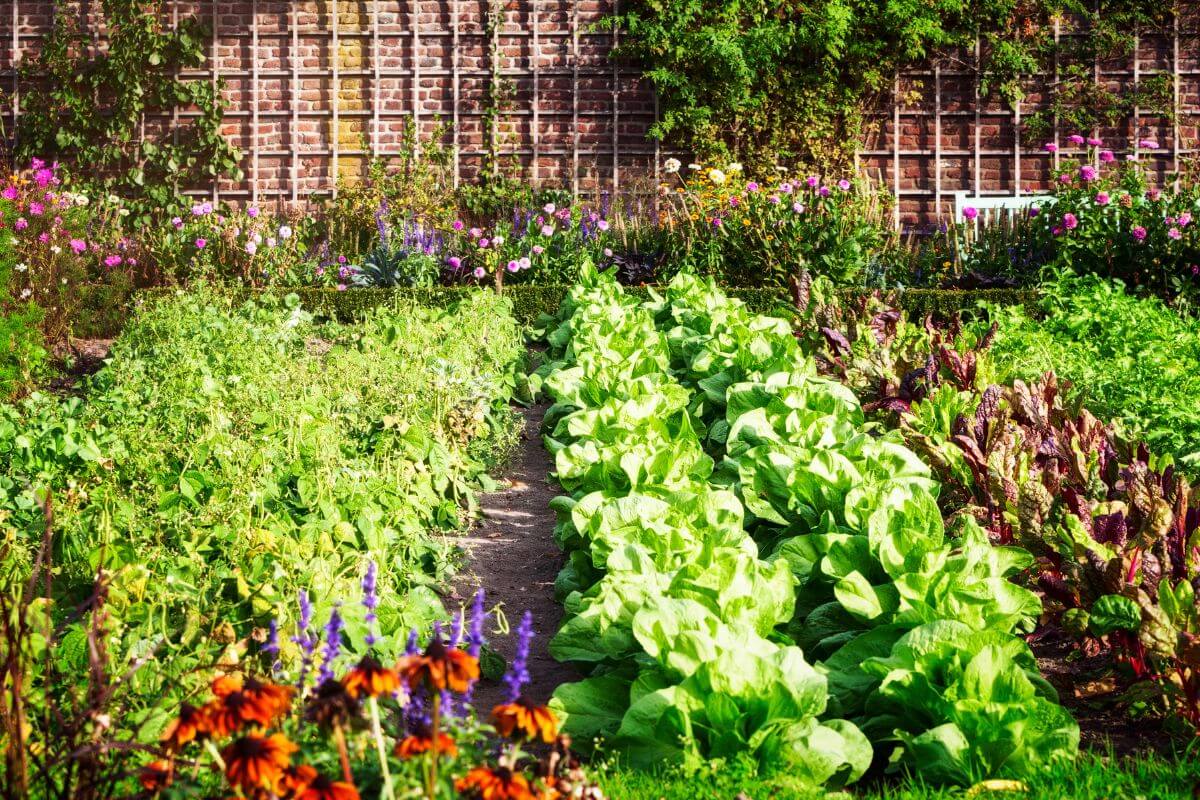
Most vegetables need an open, sunny spot with some protection from the wind. Vegetable seeds need warm soil to germinate and full sun to ripen. So you must pick an area with at least 6 hours of sunlight daily in the summer.
Some vegetables, like salad leaves, prefer partial shade and may need extra shade on hot days. However, this can be achieved by hanging up sheets when necessary.
- Read more about Sun Requirements for Vegetables
You should choose an area with level ground, although a slight incline would be okay. Avoid low areas that stay wet in the spring. Also, avoid planting in sites at the bottom of a slope, as these can be susceptible to frost pockets.
Access to water is also something to consider, as watering your vegetables on a hot day can be hard work. Make it so your water source is as easy for yourself as possible.
What Size Should Your Vegetable Garden Be?
The size of your vegetable plot depends on how much you want to grow. However, I recommend starting small. This is especially if you are just starting your first vegetable garden.
Gardening is hard work. Creating a vegetable patch requires a lot of manual labor. This is especially true if you need to dig up turf and make the soil suitable for planting.
Another good reason for starting small is that you will limit the number of vegetables you grow. While it might be tempting to try and grow as many plants as you want, gardening can be a lot of trial-and-error. Your first garden should teach you a lot.
Focusing your efforts on three or four types of vegetables is more manageable. You will see which types do well in your garden and local climate. You can refine the process and garden each year, adding more vegetables if you want more variety.
How to Prepare the Soil for Your Vegetable Garden?
Your soil preparation will depend entirely on what you’re working with. Healthy soil is essential for successful plant growth. Below are the steps to prepare your soil for a vegetable garden.
- Learn more about How to Choose Soil for Vegetable Garden
1. Clear the Area
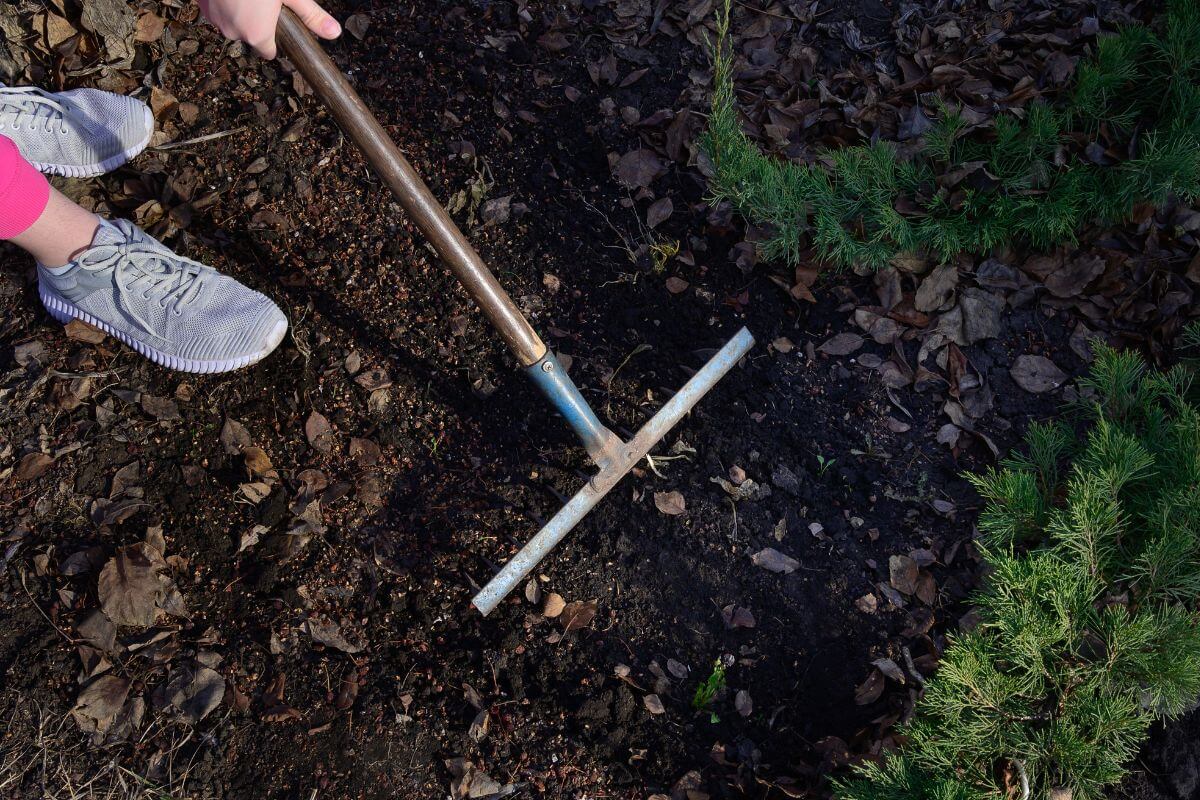
The first step in preparing soil for a vegetable garden is to clear the area of any existing vegetation. This includes weeds, grass, and other unwanted plants. This ensures that your vegetables will not compete with other plants. Such as for resources like moisture and nutrients.
Use a sharp garden spade, hand tools, or a sod cutter to remove all vegetation, including roots and all. If there are persistent weeds, cut them down or treat them with an organic herbicide.
2. Till the Soil
Tilling the soil is important. It removes any obstructions that could prevent the growth of new plants. Remove any roots, rocks, or stones you find.
Incorporate organic matter to improve soil structure and fertility as you dig. This includes compost, well-rotted manure, or composted bark. Dig the soil to a depth of 37.5-45 cm (15-18 in) to incorporate organic matter and break up any compacted layers (source).
3. Test the Soil
Light brown earth that crumbles between your fingers is the perfect foundation for your garden. This is loam soil that is ideal for growing vegetables. Unfortunately, you will likely have either clay or sandy soil in your yard than loam soil.
Clay soil will squish into balls and stick together when you squeeze it in your hand. Sandy soil will run through your fingers. Both soils have benefits, but you can add soil enhancers to them.
The best way to amend clay or sandy soil is to dig in plenty of organic material, such as compost. A layer of compost will improve the soil structure. It increases both moisture retention and drainage. It also adds nutrients and microorganisms to the soil.
- Read more about the Best Compost for Vegetable Gardens
Consider trench composting if you’re short on time. Dig a trench, fill it with organic garden and kitchen waste, and compost directly on-site. You can usually buy large amounts of compost locally if you want a quicker method.
How to Choose Which Vegetables to Grow in Your Garden?
Plant vegetables that you love to eat. You might be tempted to choose easy-to-grow vegetables like lettuce or radish. But, there’s little point unless you like to eat them.
I’ve listed some of the easiest vegetables to grow for beginners. I recommend you choose no more than four of these initially to concentrate your efforts.
- Potato – Potatoes are easy vegetables to grow. This is especially true if you live somewhere with a long summer. They store well, so you can harvest potatoes all season. They are also very nutritious. Potatoes contain vitamin C and potassium, and they are high in fiber.
- Tomato – Tomatoes are easy to grow and require only moderate care. They can be eaten fresh, canned, or dried. You can grow tomatoes from seedlings, transplants, or starts.
- Lettuce – Lettuces are easy to grow, versatile, and delicious. Lettuces come in many varieties, including romaine, butterhead, leaf, and green leaf. There are even miniature lettuces.
- Radish – Radish germinates and grows quickly, even in less than a month. It is a small, round root vegetable that can be used raw in salads or cooked as a side dish. The flavor of radishes can range from mild to spicy.
- Legumes and Peas – Legumes are a group of plants related to peas and green beans. They help fix nitrogen in the soil and can grow in poor soil conditions. They include alfalfa, clover, lentils, peanuts, soybeans, and vetch. All legumes are rich sources of protein.
- Kale – Some people consider kale the king of greens for its nutrition and ease of growth. It can grow in a wider range of temperatures. Kale has a slightly bitter flavor and looks like dark green curly hair. It is a member of the cabbage family and a good vitamin A source.
- Beet – Beets are a good source of vitamins A and C and calcium. They are also low in calories, making them ideal for weight loss diets. Beets are easy to grow and don’t need much space.
- Swiss Chard – Swiss chard is a nutritious and flavorful leafy green vegetable. It is high in vitamin A, B6, iron, magnesium, potassium, folate, fiber, and antioxidants. It is best eaten when young. Older leaves have more chlorophyll, which can upset the stomach.
- Zucchini – Zucchini is a summer squash grown for thousands of years. It is usually harvested before maturity, but it is still delicious. It contains many nutrients, including vitamin C, folate, potassium, and magnesium.
- Carrot – Carrots are easy to grow when in loose, sandy soil. They’re sweet, crunchy, and full of vitamin A. Carrots have beta-carotene. It helps your body absorb other key nutrients.
You will find that some vegetables do well while others do not after the first year. Consider your favorite vegetables and the climate in your local area. If your area has hot weather, you won’t want to plant cool-season crops like lettuce and kale.
How to Plant Your First Vegetables?
All vegetables are different. They need different ways to start them. They also have different conditions for germinating and planting. Below is a rough guide to planting your first vegetables.
1. Prepare the Site
Preparing your garden site will depend on what you are planting and how you start them. Get some soft earth and prepare your seed trays or propagator if you’re growing from seed.
Some vegetables, like peppers and tomatoes, need a long growing season and warm temperatures to start. In cool or short-season places, you might have to start the seeds indoors or in a heated greenhouse.
Vegetables like lettuce and parsnip can be sown directly into the spot where you’re growing them. Break up the soil and remove stones from the area in this case.
2. Protect Your Seedlings
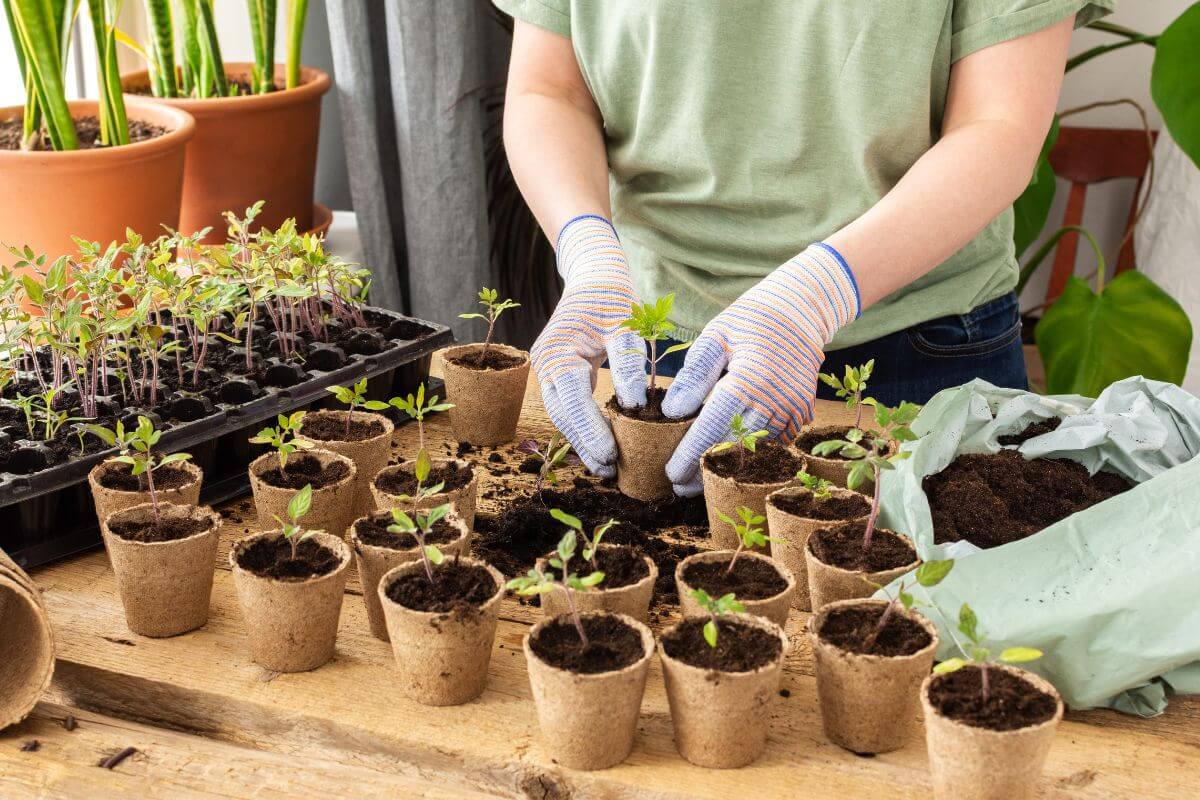
Make sure to harden off or acclimate vegetables grown indoors. You need to adjust them to outdoor weather if you plan to move them outside. You should also harden off seedlings from a nursery if you aren’t growing from seeds.
Here are the steps to harden off plants before moving them outdoors:
- Start by taking your plants outside on sunny days for a few hours, first in the shade, then in full sun.
- Increase the time they are out each day and leave them all day by day five.
- Take them in that night, and the next day, leave them out all day and night. They will then be ready to plant outdoors.
Keep an eye on your seedlings in case hungry birds feel like snacking on them. You can also use cloches or nets to keep away pests like snails and slugs that like to munch at night. Use cloches or other heat-retaining covers to keep them warm. This is in cooler areas or places with a short growing season.
3. Know When and Where to Plant Vegetables in Your Garden
Each vegetable will have a planting window for when to plant to get the most out of your vegetables. Seed packets usually give you the best times and strategies for planting. For example, staggered planting.
It’s also good to find your area’s growing season, usually the last and first frost dates. This will help you know the best planting time for your region.
Make sure you note how much sun your vegetable patch gets. Plants that need full sun require at least 6 hours per day. Partial shade means plants require between 3 and 6 hours of sunlight. Full shade is anything less than 3 hours of direct sunlight.
Be sure to research the type of soil your different plants require and amend the soil as needed. You can help by growing them in pots if different soils are needed.
The best way to start creating a vegetable garden plan is to research companion planting. This is to maximize available space. Also, consider the height of your finished plants.
Every gardener should rotate crops in four or five areas each year. This method prevents soil pests and keeps nutrient levels high. If crop rotation isn’t possible, avoid planting the same crops in the same spot annually.
- Read more on What Is the Best Vegetable Garden Layout?
How to Water Your Vegetable Garden
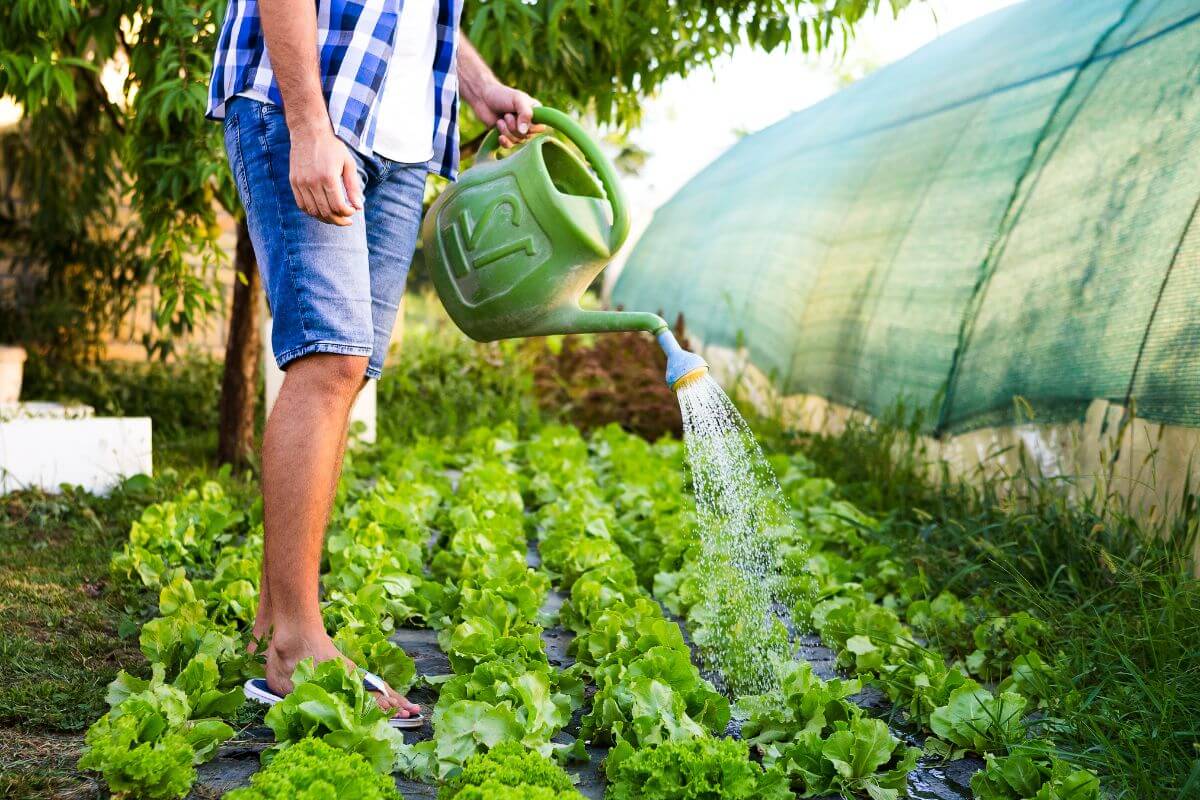
The best time to water your vegetable garden is early morning before the day heats up. Give your vegetables a really good soak at least once a week rather than a little bit every day. This will help the water get right down to the roots rather than sitting on the surface.
Rainwater is usually preferable to tap water for watering your vegetables. So, get a couple of rain barrels to harvest water during rainy days.
- Learn more through this Watering Vegetable Garden Guide
How to Deal With Vegetable Garden Pests and Diseases
Each type of vegetable is susceptible to different pests and diseases. Many modern vegetable varieties are bred to resist disease. But you can still take extra steps to help. These include:
- Check Your Plants Everyday – Most pests are best dealt with before they become an infestation. There are many natural ways of pest control without chemical pesticides. You can nip any issues in the bud and ensure a constant supply of fresh veggies by checking your plants daily.
- Keep Your Plants Well-Watered and Weed-Free – Plant diseases occur for various reasons. But healthy plants can fight off infections more easily than weak ones. Make sure your plants are watered and weed-free. Mulching around your vegetable plants will help suppress weeds. A small hand hoe can make getting rid of tiny weed seedlings much easier.
- Cover Your Plants – If you are struggling with pests, consider covering your plants. You can use netting or fabric row covers that allow light in but keep bugs out.
What Are Other Types of Vegetable Gardens?
There are other types of vegetable gardens besides the usual outdoor vegetable gardens. Both novice gardeners and experienced gardeners can start in them. Let’s explore what other vegetable gardens you can do.
1. Container Vegetable Garden – Ideal for Limited Garden Space
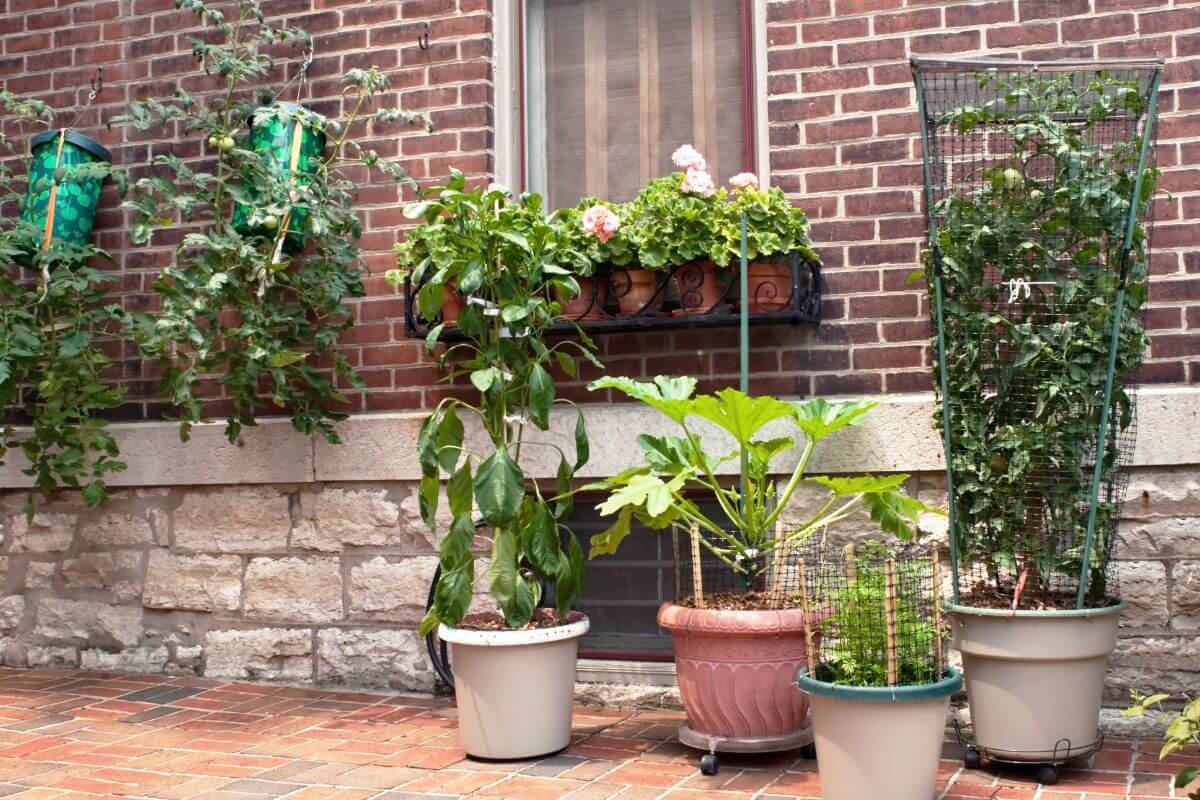
Container gardening is perfect for those with limited space or a patio garden. Any vegetable can be grown in a container or pot.
The added benefit of container vegetable gardening is mobility. You can move your plants around during the day to maximize their sun exposure. This is especially true if your garden doesn’t have a spot with full sun.
You can even buy plant stands with wheels to make the job much easier. The only downside is that container plants can dry out quickly, so ensure they get regular water.
2. Raised Bed Vegetable Garden – Great for Beginners
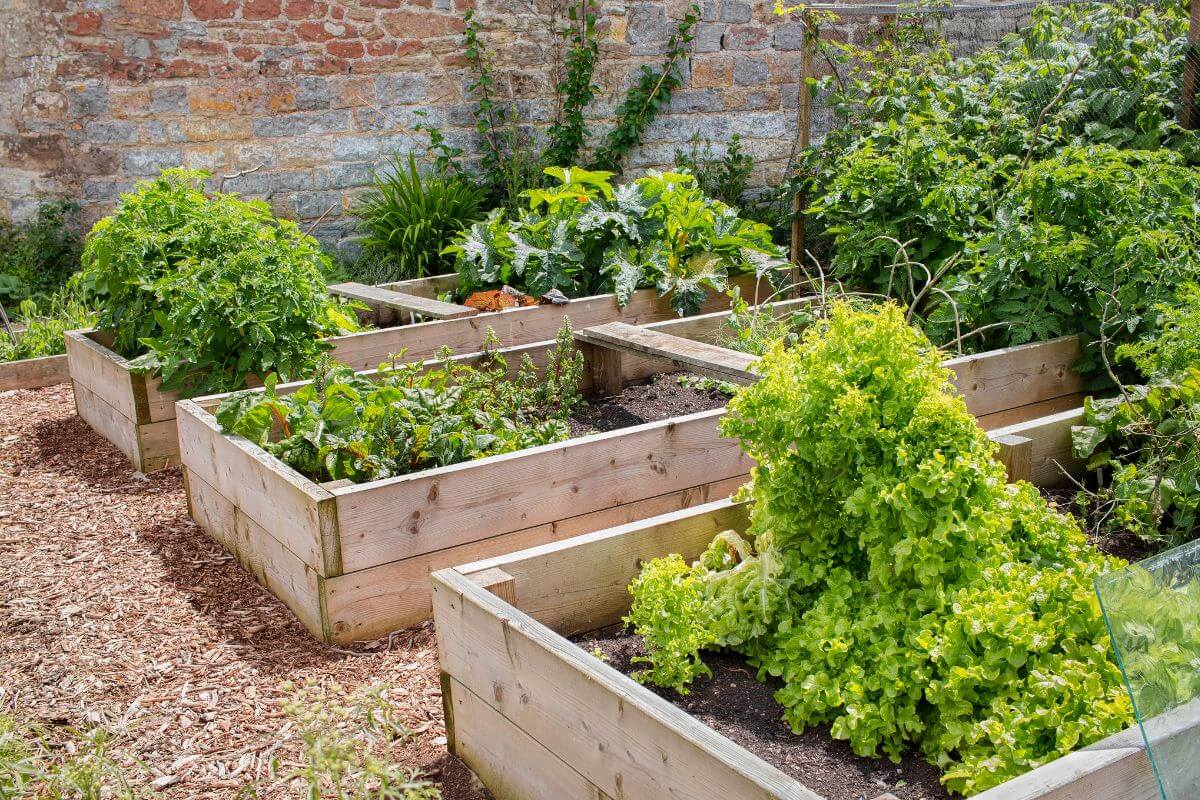
Raised bed vegetable gardens have many benefits. They are easier to work and weed. The earth will warm up quicker in the spring. They can also make a vegetable patch look much neater than just planting in the ground.
Raised beds offer an easy crop rotation system. They have designated beds for individual plants and each type of vegetable.
3. Indoor Vegetable Garden – Good for Veggies Year-Round
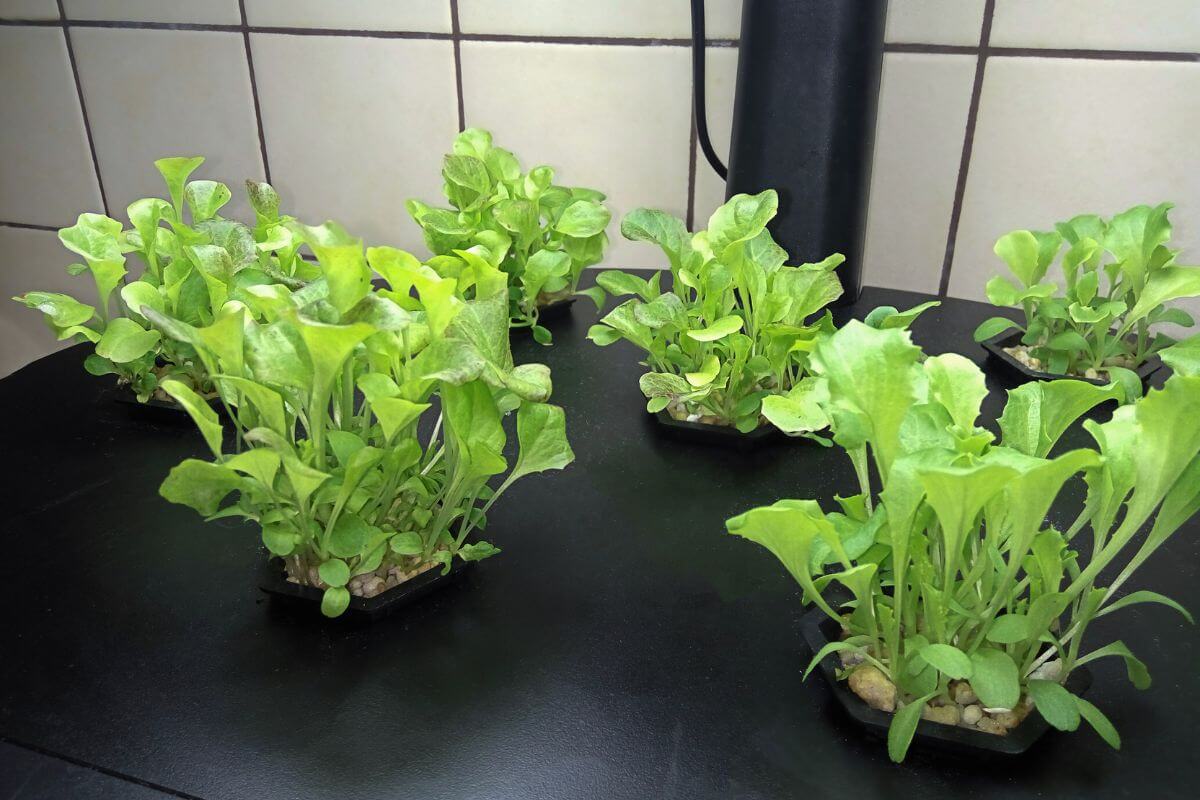
Indoor vegetable gardening is only really limited by space. But plenty of dwarf varieties of vegetables will be great for an indoor vegetable. Salad leaves are perfect for an indoor garden, as they can be harvested as and when needed.
A great way to start growing vegetables indoors is with indoor smart gardens. This includes AeroGarden garden systems and Click and Grow Gardens.
- Learn more about Growing Vegetables Indoors
4. Hydroponics Vegetable Garden – Perfect for Soil-Free Leafy Greens
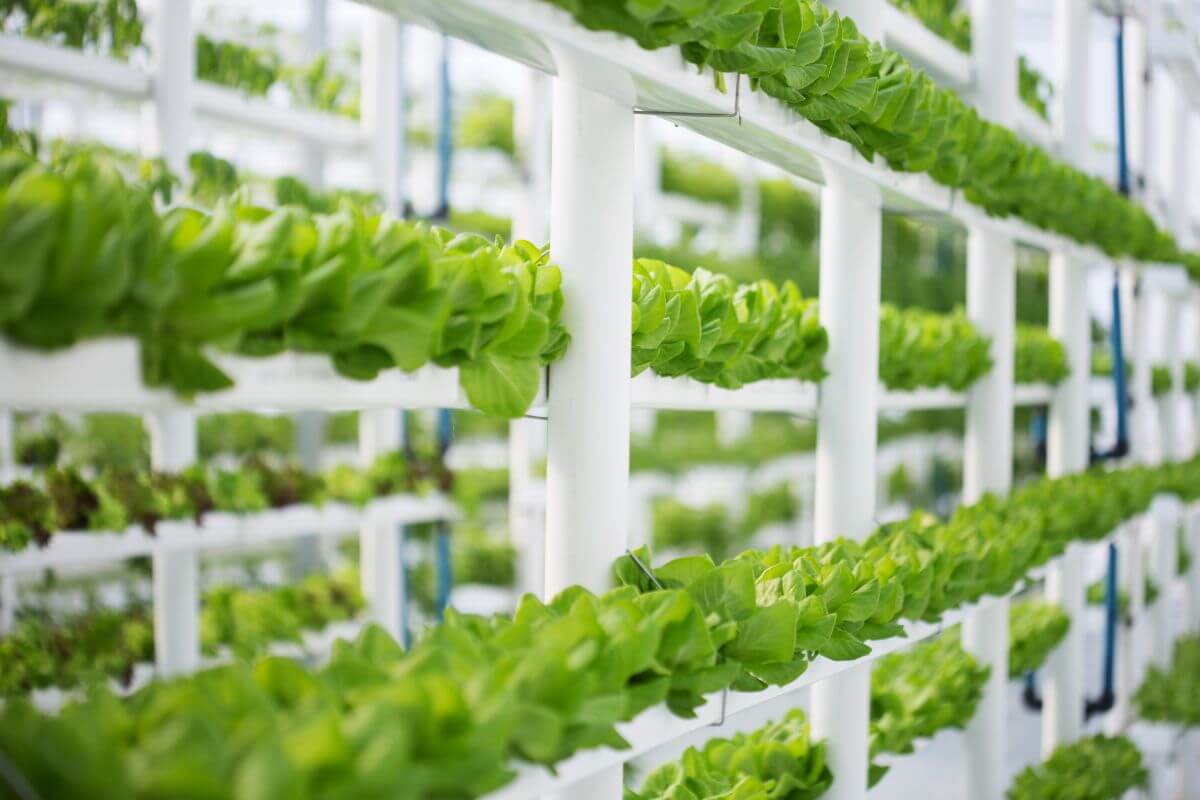
Hydroponic vegetable gardening does not require soil. You can use gravel, sand, or pebbles. You can even use plastic bottles. These materials create a nutrient-rich hydroponic environment.
This method works well for leafy greens like lettuce, spinach, and kale. You can also grow smaller vegetables like cherry tomatoes.
- Read the Complete Guide to Hydroponics
5. Greenhouse – Best for Cool Areas
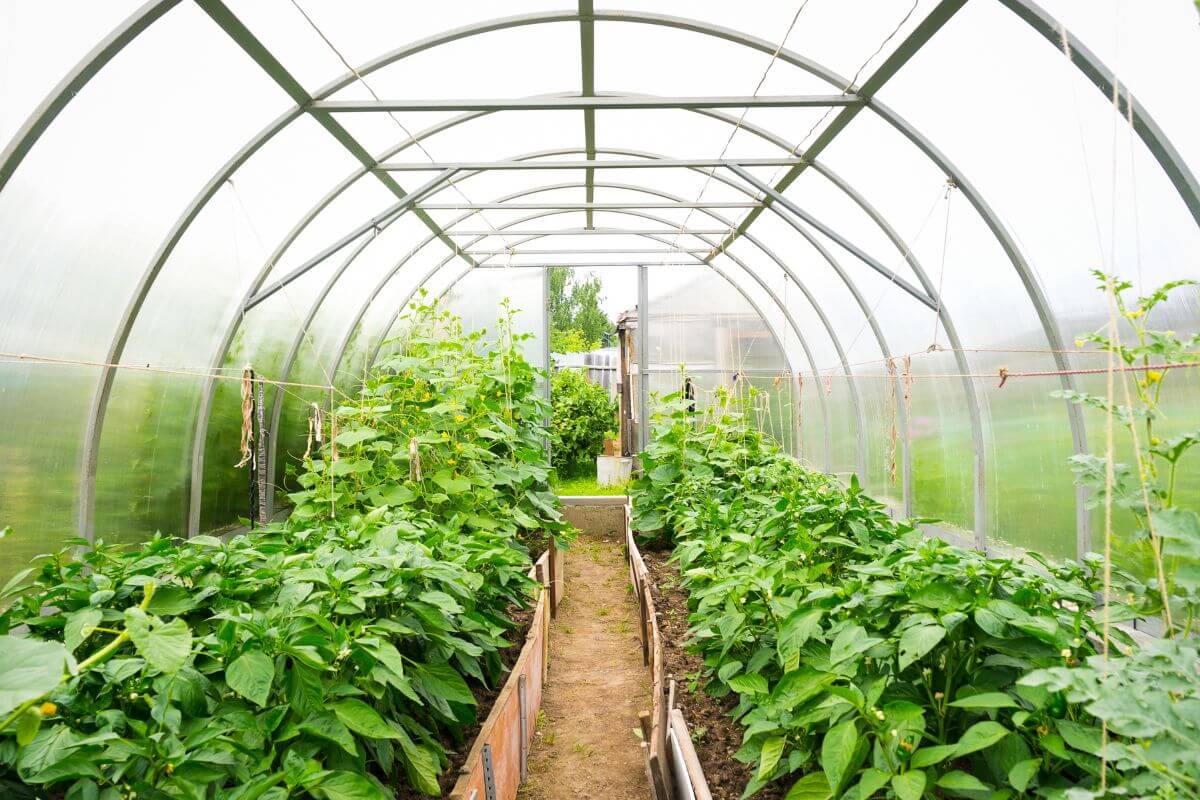
Greenhouses are a perfect way to extend your growing season if you live in a cooler weather area. You can use a greenhouse to sprout seeds. Do this before planting them. You can also grow vegetables like peppers and tomatoes there.
However, it is essential to water your plants regularly, as they won’t have access to natural rainfall.
Starting a Vegetable Garden Final Thoughts
Starting a vegetable garden is simple and can be a relaxing, enjoyable activity. All you need is some good-quality seedlings and a little bit of time. Don’t be afraid to get a bit obsessed – if you want to get a good crop and enjoy many tasty vegetables, you must invest a lot of time.
Check your plants, keep them on top of weeds, and keep them watered. Start composting if you haven’t yet! Turn your garden waste and kitchen scraps into rotted organic material that you can dig into your vegetable patch yearly. This will keep your soil in tip-top shape and reduce landfills.
Starting a Vegetable Garden FAQs
1. What Is the Best Vegetable Garden for Beginners?
A raised bed garden with easy-to-grow vegetables like tomatoes, lettuce, and radishes is great for beginners. Start small, learn as you go, and enjoy the process!
2. What Are the 10 Easiest Vegetables to Grow?
The 10 easiest vegetables to grow include tomatoes, lettuce, radishes, carrots, beans, peas, cucumbers, zucchini, spinach, and peppers. They typically require minimal care and thrive in various climates, making them perfect for beginners.
3. What Is the Best Size Vegetable Garden for a Beginner?
For a beginner, a vegetable garden of around 4 feet by 4 feet or 4 feet by 8 feet is manageable. It’s large enough to grow various vegetables but not overwhelming to maintain.
4. What Vegetables Grow Best Together?
Vegetables that grow well together include tomatoes and basil, carrots and onions, and beans and corn. These combinations often benefit each other by deterring pests, maximizing space, and enriching soil health.
5. What Is the Fastest Vegetable to Grow?
Radishes are among the fastest-growing vegetables, typically ready to harvest within 3-4 weeks after planting. They’re ideal for beginners seeking quick results and can be grown in small spaces or containers.
Read more about gardening in these articles:


